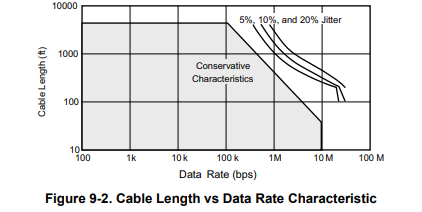Other Parts Discussed in Thread: THVD2450
Hi Team,
Cable length and signaling rate of this product is up to1200m at 500 kbps (with slew rate limit) and node is Up to 256.
Dose it mean it can use with 1200m, 500kbps and 256 nodes?
Or it need to reduce cable length or signaling rate in the case of 256 nodes?
If need to reduce, please tell me the spec.
Best Regards,





